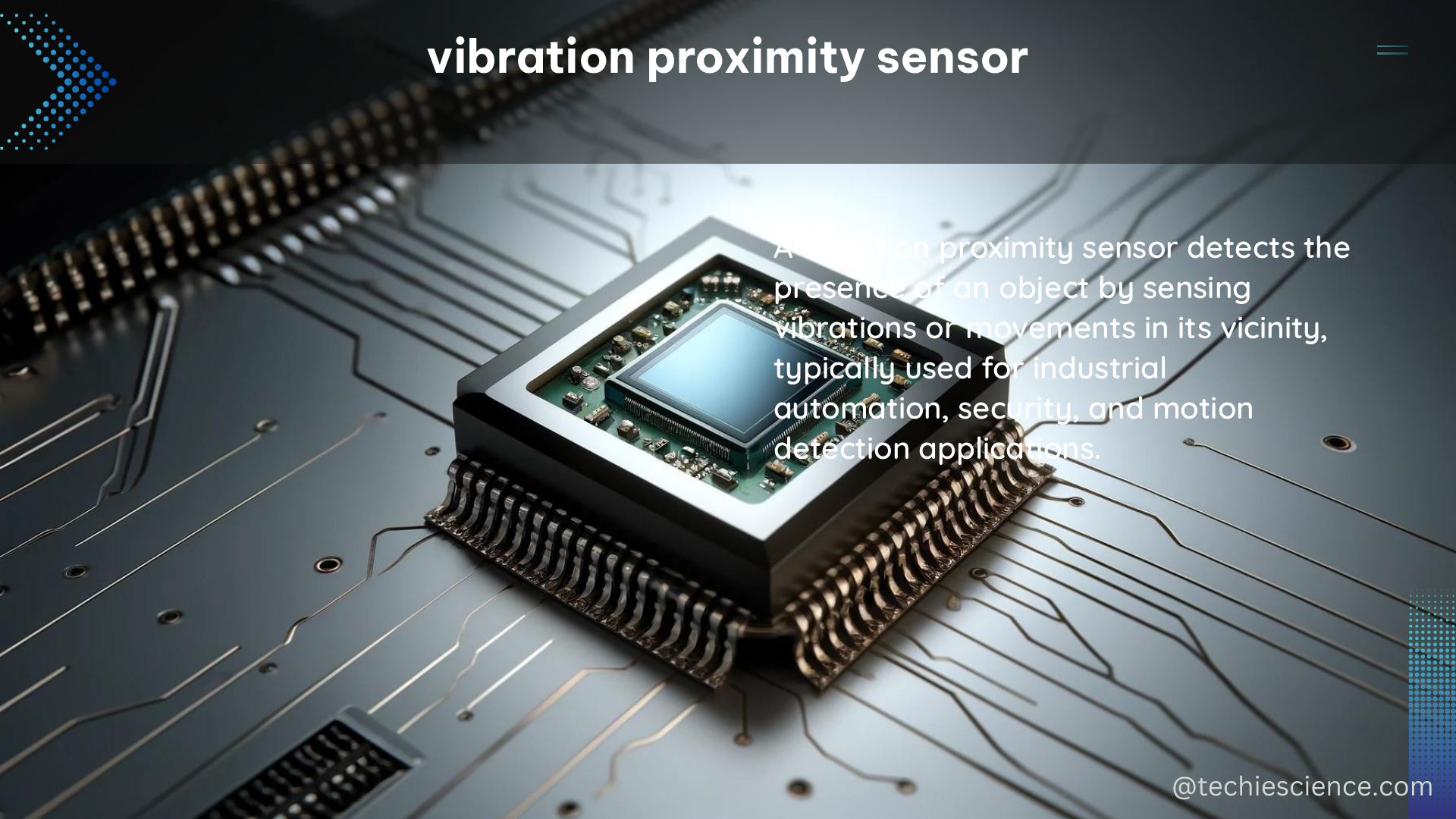Vibration proximity sensors, also known as proximity sensors, are versatile devices that can detect the presence or absence of an object within a certain range without physical contact. These sensors work by emitting an electromagnetic field or a beam of electromagnetic radiation and analyzing the changes in the field or return signal to determine the distance, presence, or motion of an object.
Technical Specifications of Vibration Proximity Sensors
The technical specifications of vibration proximity sensors can vary depending on the manufacturer and the specific model. However, some common specifications include:
-
Detection Range: The maximum distance at which the sensor can reliably detect an object. This can range from a few millimeters to several meters, depending on the sensor type and application.
-
Response Time: The time it takes for the sensor to detect a change in the presence or distance of an object. Typical response times can range from less than 1 millisecond to several milliseconds.
-
Operating Temperature: The range of temperatures within which the sensor can operate without compromising its performance. This can typically range from -20°C to +70°C.
-
Power Supply: The voltage and current requirements of the sensor, which can vary from 5V DC to 24V DC, depending on the model.
-
Output Signal: The type of electrical signal the sensor produces to indicate the presence or absence of an object. Common output signals include NPN or PNP transistor, analog voltage, or digital pulse.
Measuring the Performance of Vibration Proximity Sensors

To evaluate the performance of a vibration proximity sensor, various methods and parameters can be used:
-
Sensitivity: The sensitivity of the sensor can be determined by measuring the change in output signal per unit of distance or object size. For example, an inductive proximity sensor may have a sensitivity of 0.1 V/mm, meaning that a 1 mm change in object distance would result in a 0.1 V change in the output signal.
-
Accuracy: The accuracy of the sensor can be evaluated by comparing the measured values with the actual values or by calculating the error or uncertainty of the measurement. For instance, an ultrasonic proximity sensor may have an accuracy of ±2 mm within a detection range of 10 cm.
-
Repeatability and Reproducibility: The repeatability and reproducibility of the sensor can be assessed by performing multiple measurements under the same or different conditions and analyzing the variability or consistency of the results. This can help determine the sensor’s reliability and consistency in different applications.
Types of Vibration Proximity Sensors and Their Applications
There are several types of vibration proximity sensors, each with its own unique characteristics and applications:
- Inductive Proximity Sensors:
- Use an electromagnetic field to detect metallic objects
-
Commonly used in industrial automation, robotics, and machinery for positioning, counting, sorting, or switching applications
-
Capacitive Proximity Sensors:
- Use an electric field to detect any object, including non-metallic ones
-
Often used in level sensing, liquid detection, or intrusion detection applications
-
Ultrasonic Proximity Sensors:
- Use sound waves to detect objects
-
Widely used in automotive, medical, or domestic applications for distance measurement, obstacle detection, or proximity warning
-
Optical Proximity Sensors:
- Use light to detect objects
- Prevalent in consumer electronics, automotive, or security applications for presence detection, motion detection, or gesture recognition
Conclusion
Vibration proximity sensors are versatile devices that can measure various quantities and characteristics of objects without physical contact. Their technical specifications and performance can be quantified and evaluated using various methods and parameters. The different types of vibration proximity sensors, including inductive, capacitive, ultrasonic, and optical sensors, are used in a wide range of applications, from industrial automation and robotics to consumer electronics and automotive systems.
References:
- Digital Habit Evidence – Duke Law Scholarship Repository, 2022-12-16, https://scholarship.law.duke.edu/cgi/viewcontent.cgi?article=4144&context=dlj
- Sensor Technology Handbook – OLLINTEC, 2016-01-04, http://ollintec.com/fie/sensores/libros/Sensor%20Technology%20Handbook.pdf
- Human Factors Considerations for Quantifiable Human States in Physical Human–Robot Interaction: A Literature Review, Sensors, 2023, 23(17):7381, https://www.mdpi.com/1424-8220/23/17/7381
- Sensing and Sensor Fundamentals, SpringerLink, 2014-01-04, https://link.springer.com/chapter/10.1007/978-1-4302-6014-1_2
- Sensors for daily life: A review, ScienceDirect.com, https://www.sciencedirect.com/science/article/pii/S2666351121000425

The lambdageeks.com Core SME Team is a group of experienced subject matter experts from diverse scientific and technical fields including Physics, Chemistry, Technology,Electronics & Electrical Engineering, Automotive, Mechanical Engineering. Our team collaborates to create high-quality, well-researched articles on a wide range of science and technology topics for the lambdageeks.com website.
All Our Senior SME are having more than 7 Years of experience in the respective fields . They are either Working Industry Professionals or assocaited With different Universities. Refer Our Authors Page to get to know About our Core SMEs.